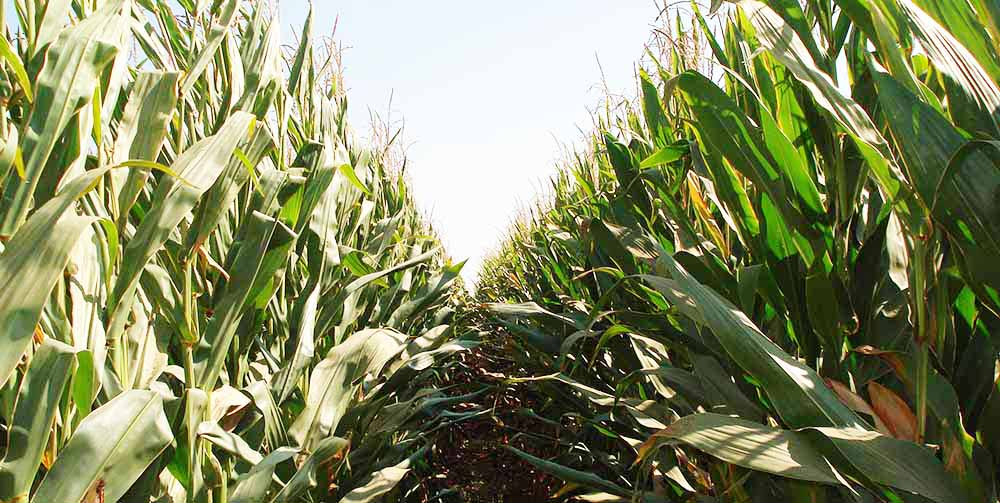Analysis of Corn Stover

Background
Corn stover (also referred to as maize stover) is an agricultural residue similar to straw that is considered to be a substantial potential biorefining resource in the USA - an availability of 200 million tonnes has been estimated, equivalent to more than half the total amount of agricultural residues produced.This resource is so large partially because of the amount of corn grown in the US, but also because of the amount of residues produced by the crop; it has been estimated that corn in the US produces 1.7 times more residue than other cereals.
This field harvest residue consists of the stalk (around 48% of the total dry mass), leaves (28%), and husks (8%) of the plant, as well as the cob (15%).
For stover and other straws, the amount of residue that needs to be left on the soil to preserve soil fertility and prevent against soil erosion is an important consideration. This is a complex issue and the field stover requirements will vary according to the location and factors such as climate, soil characteristics, tillage type and crop rotations.
Corn stover can be harvested wet or after drying on the field for a period of time. A dry harvest involves the residue being shredded and raked before being left to field dry and at a later point the stover is windrowed and baled. Since this is a multi-pass operation it can be costly and means that grain harvesting and residue collecting operations cannot be integrated. An alternative is to harvest the product wet in which case the shredding, windrowing and baling can take place on the same day as grain harvest with the first two operations possible from the grain harvester itself. The stover can then be ensiled to prevent storage losses.
The target of many researchers developing integrated harvesting practices is a one-pass system that allows for the simultaneous harvest of grain and stover while also leaving enough residue on the field to preserve soil fertility. There is also work on modifying the header of such an integrated combine so that the relative proportions of the stover fractions (cobs, stalks etc.) can be varied according to the end needs of the biorefinery.
Analysis of Corn Stover at Celignis
Celignis Analytical can determine the following properties of Corn Stover samples:
Sugars (Monosaccharides)
Sugar Alcohols and Uronic Acids
Lignin and Extractives
- Lignin (Klason)
- Lignin (Klason - Protein Corrected)
- Lignin (Acid Soluble)
- Acid Insoluble Residue
- Extractives (Ethanol-Soluble)
- Extractives (Water-Soluble)
- Extractives (Exhaustive - Water then Ethanol)
- Lignin S/G Ratio
- Extractives (Water-Insoluble, Ethanol Soluble)
- Protein Content of Acid Insoluble Residue
- Carbon Content of Acid Insoluble Residue
- Hydrogen Content of Acid Insoluble Residue
- Nitrogen Content of Acid Insoluble Residue
- Sulphur Content of Acid Insoluble Residue
Amino
Acids
Thermal Properties
- Moisture
- Ash
- Ash (Acid Insoluble)
- Carbon
- Hydrogen
- Nitrogen
- Sulphur
- Oxygen
- Volatile Matter
- Fixed Carbon
- Gross Calorific Value
- Net Calorific Value
- Chlorine
- Ash Shrinkage Starting Temperature (Oxidising)
- Ash Deformation Temperature (Oxidising)
- Ash Hemisphere Temperature (Oxidising)
- Ash Flow Temperature (Oxidising)
- Ash Shrinkage Starting Temperature (Reducing)
- Ash Deformation Temperature (Reducing)
- Ash Hemisphere Temperature (Reducing)
- Ash Flow Temperature (Reducing)
- Thernogram - Under Nitrogen
- Thermogram - Under Air
Major and Minor Elements
Cellulose Content of Corn Stover
Each of the different corn stover fractions (stalk, leaves, husks, and cob) have different lignocellulosic compositions.For example, the cellulose content is typically highest in the stalk, and less in the husks, lower still in the cob, and lowest in the leaves.
Furthermore the composition of these residues will also vary due to the variety of the plant and its productivity.
Click here to see the Celignis Analysis Packages that determine cellulose content.
Hemicellulose Content of Corn Stover
The total hemicellulose content, and its constituent sugars, varies greatly according to the stover fraction. For instance, xylan content is usually greatest in the cob whilst the husks tend to have more arabinose than in present in the other fractions.Click here to see the Celignis Analysis Packages that determine hemicellulose content.
Lignin Content of Corn Stover
Each of the different corn stover fractions (stalk, leaves, husks, and cob) have different lignin contents.Click here to see the Celignis Analysis Packages that determine lignin content.
Starch Content of Corn Stover
The starch content of corn stover will vary according to the anatomical fraction of the plant. For instance, it will be higher in the cobs and lower in the stem.Click here to see the Celignis Analysis Packages that determine starch content.
Uronic Acid Content of Corn Stover
Uronic acids can be present as side chains attached to the main backbone of hemicelluloses in corn stover. They concentrations of uronic acids tends to be greatest in the nodes, lower in the internodes, and at intermediate levels in the leaves. Corn cobs can also contain uronic acids.Click here to read more about uronic acids and to see the Celignis Analysis Packages that determine uronic acid content.
Enzymatic Hydrolysis of Corn Stover
We can undertake tests involving the enzymatic hydrolysis of Corn Stover. In these experiments we can either use a commercial enzyme mix or you can supply your own enzymes.We also offer analysis packages that compare the enzymatic hydrolysis of a pre-treated sample with that of the native original material.
Click here to read more about enzymatic hydrolysis and to see the various analysis packages that we offer.
Ash Content of Corn Stover
As with many other plants, the ash content is typically greatest in the leaf fraction of corn stover.Click here to see the Celignis Analysis Packages that determine ash content.
Heating (Calorific) Value of Corn Stover
The heating value of corn stover will depend on the relative mass proportions of the different plant fractions and also on the moisture content of the feedstock.Click here to see the Celignis Analysis Packages that determine heating value.
Bulk Density of Corn Stover
At Celignis we can determine the bulk density of biomass samples, including Corn Stover, according to ISO standard 17828 (2015). This method requires the biomass to be in an appropriate form (chips or powder) for density determination.Click here to see the Celignis Analysis Packages that determine bulk density.
Basic Density of Corn Stover
At Celignis we can determine the basic density of some suitable biomass samples. The method requires the biomass to be in an appropriate form (chips) for density determination.Click here to see the Celignis Analysis Packages that determine basic density.
| Previous Feedstock |
Go Back to List of Feedstocks.
Energy
Crops
Agricultural Residues and Wastes
Industrial Residues and Wastes
Municipal
Wastes
Biorefinery
Products






